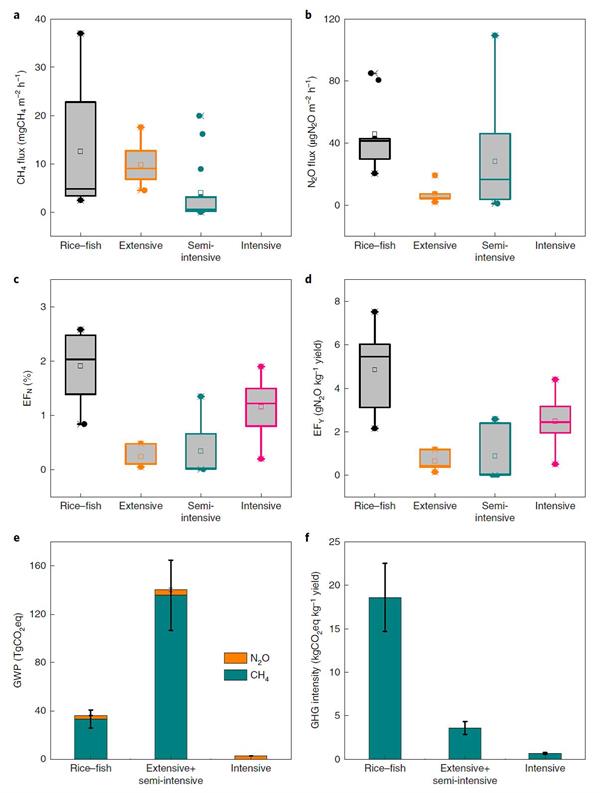Between 1961 and 2016, the average annual increase in global food fish consumption (3.2%) outpaced population growth (1.6%) and exceeded that of meat from all terrestrial animals combined (2.8%). Global capture fisheries have leveled off since the 1980s, and aquaculture has been responsible for the continuing impressive growth in the supply of fish for human consumption.
However, the rapid development of aquaculture is often accompanied by a shift in land use patterns. For instance, more than half of Chinese freshwater aquaculture ponds are reported to be converted from paddy fields. Changes in land use patterns may change the intensity of greenhouse gas emissions, but the potential impact of this process is unclear.
A research team led by Prof. DING Weixin from the Institute of Soil Sciences (ISS), Chinese Academy of Sciences, in collaboration with scientists from Bangor University and Yonsei University, conducted a field study in the Taihu Lake basin to explore the greenhouse gas costs of converting paddy fields to extensively managed crab culturing ponds.
They found that such conversion increased associated global warming potentials from 8.15 ± 0.43 to 28.0 ± 4.1 MgCO2eq ha-1, primarily due to increased methane emissions. After compiling a worldwide database of different freshwater aquaculture systems (e.g. rice-fish, extensive and semi-extensive systems, and intensive systems), they established the emission factors of methane and nitrous oxide for each system and developed a global inventory for greenhouse gas emissions from major producers and different types of freshwater aquaculture systems.
They estimated that the global top 21 producers released 6.04 ± 1.17 TgCH4 and 36.7 ± 6.1 GgN2O in 2014, accounting for 1.82% and 0.34% of global anthropogenic methane and nitrous oxide emissions, respectively.
Methane is the most important greenhouse gases in freshwater aquaculture compared with nitrous oxide, and it was primarily sourced from extensive plus semi-intensive systems, meaning a big mitigating potential for these.
They found that methane emission from intensively managed aquaculture systems was negligible because of continuous aeration. The greenhouse gas emission per unit of fish production in intensive systems was only about 18% that of extensive and semi-intensive farming systems.
Therefore, if half of the current productions from extensive plus semi-intensive systems (19.5 Mt) are replaced by intensive systems, greenhouse (methane and nitrous oxide) emissions from freshwater aquaculture will be reduced by 40.1%.
Their findings indicate that effective management of extensive and semi-intensive systems through conversion to intensive systems by installing more efficient aerators in earthen ponds and implementing optimized feeding strategies for reducing feed waste, are urgently required to mitigate greenhouse gas emissions, reduce pollution, and improve economic efficiency from the unprecedented growth of aquaculture.
|
 |
| Fig. |Literature-sourced gHg emissions factors of different aquaculture systems. |
